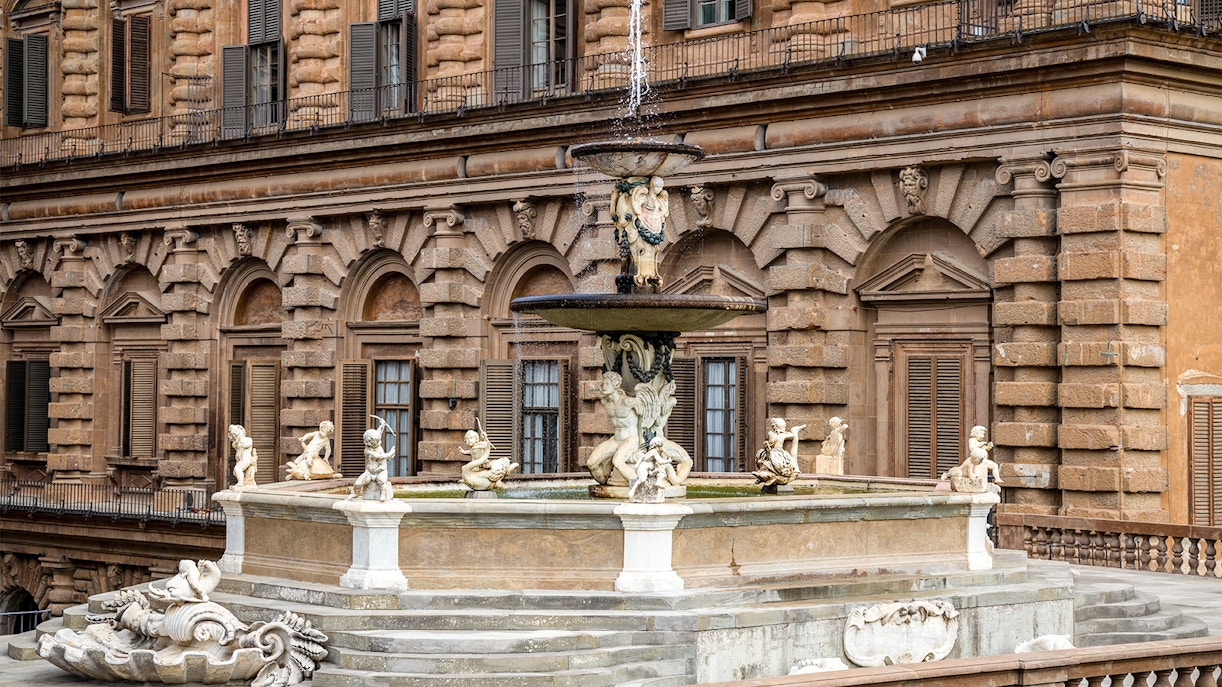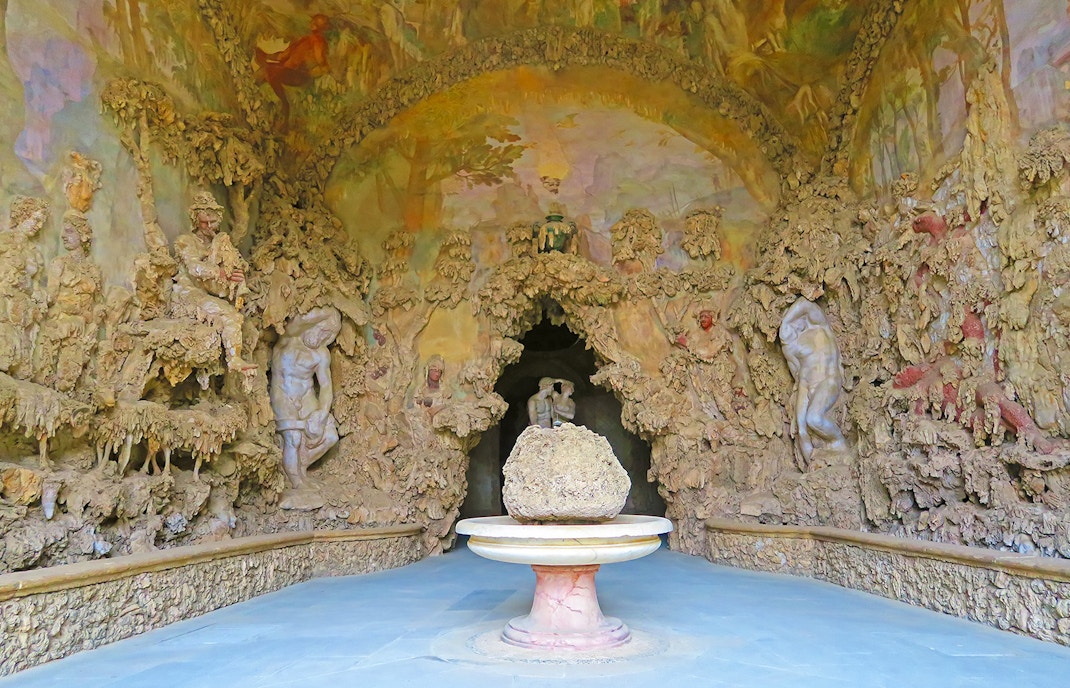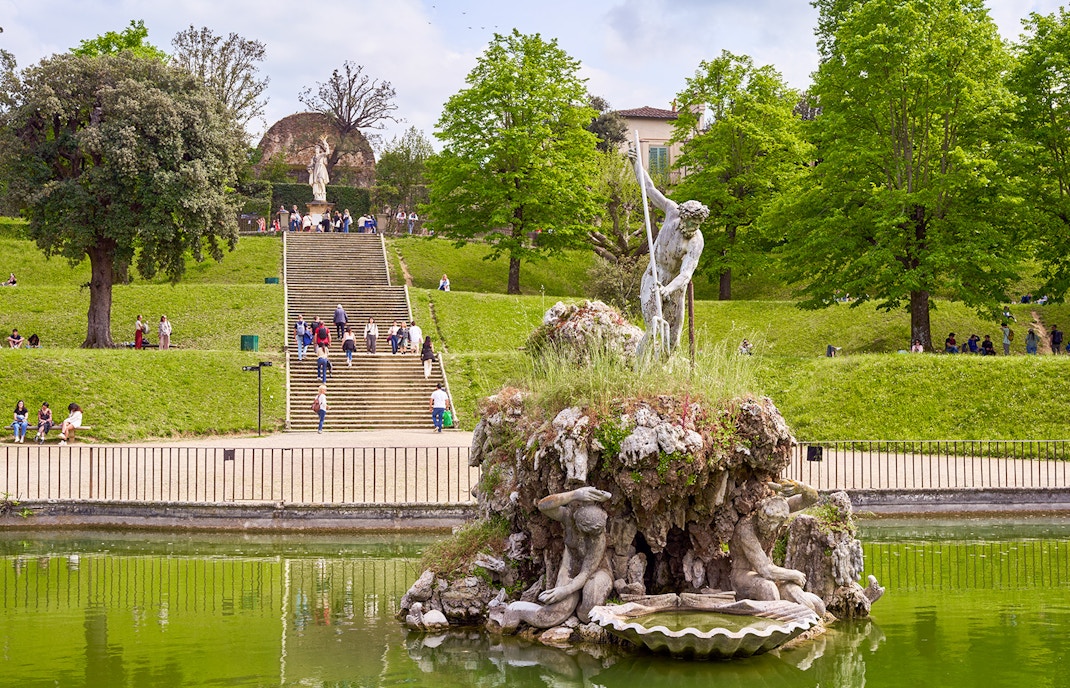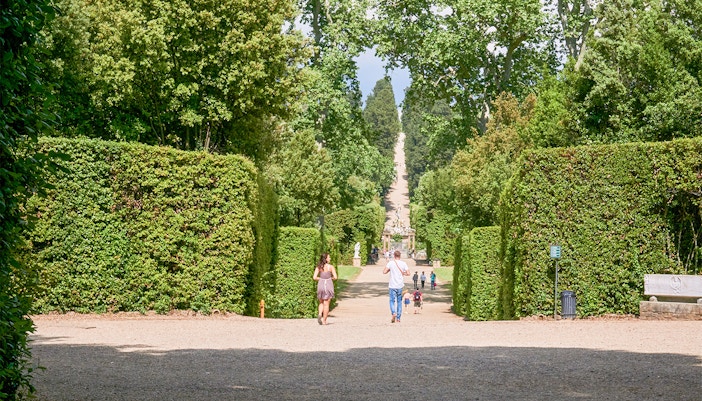A colossal masterpiece, the Neptune Fountain reigns supreme in the center of the gardens. Crafted in the 16th century, this awe-inspiring marvel pays homage to the sea's power and allure. Find it near the Palazzo Pitti, another emblem of Florence grandeur.
Major fountains of Boboli Gardens
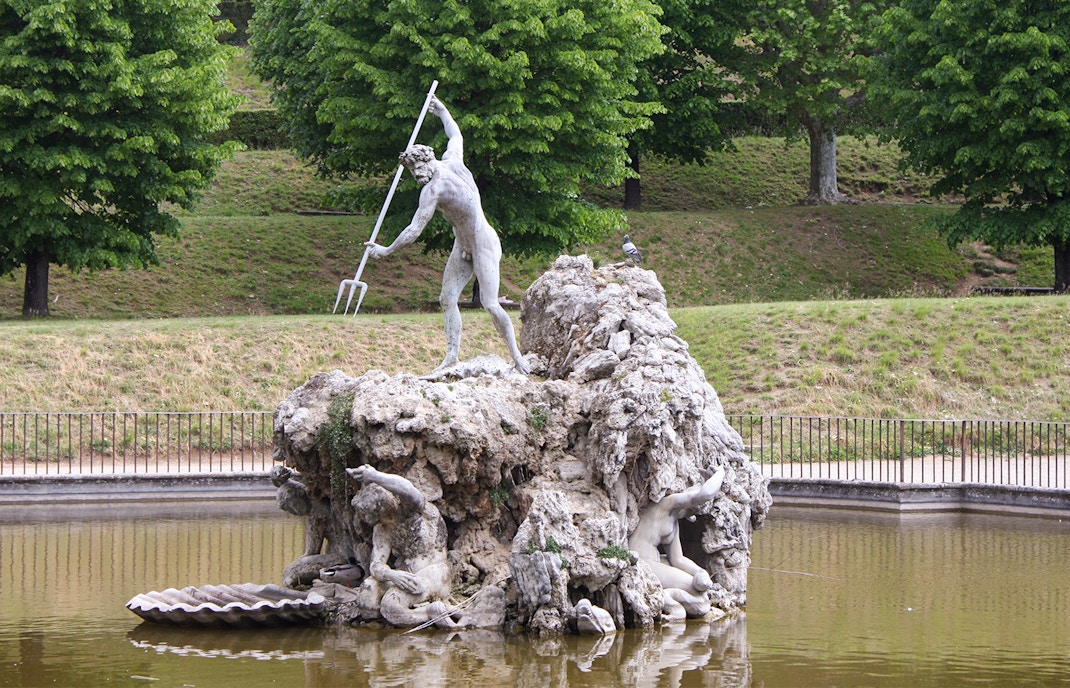
Fountain of Neptune
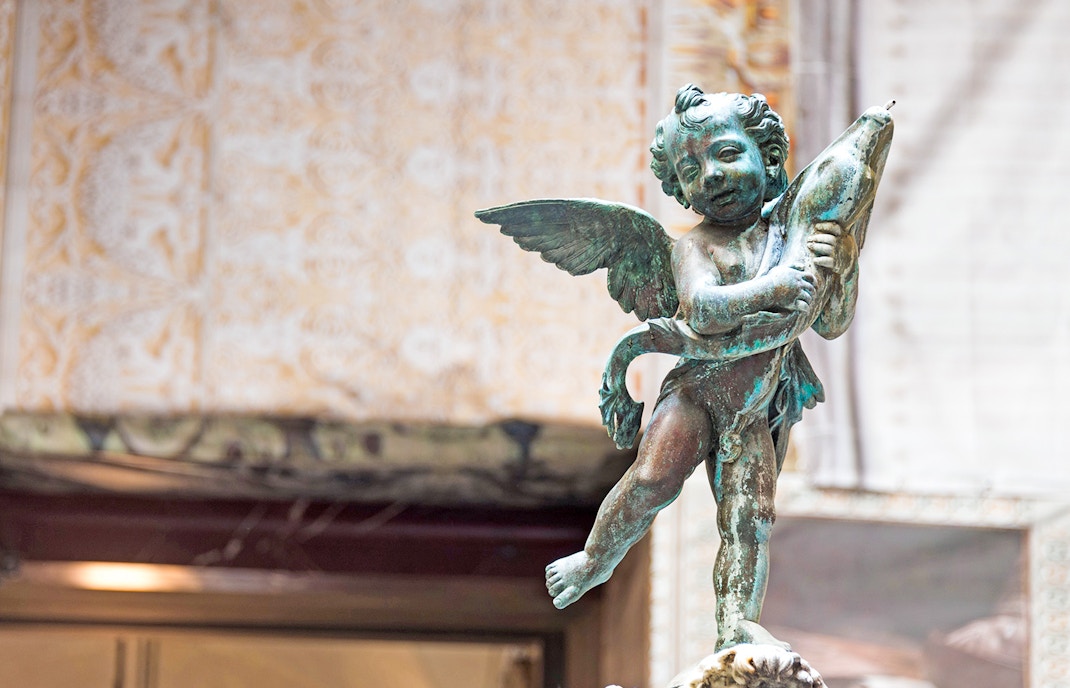
Cupid and the Dolphin
A romantic rendezvous frozen in time, the Cupid Fountain exudes elegance. Crafted in the Renaissance era, it captures love's essence. Seek it out in the Island Amphitheater, where lush greenery frames its tender beauty.
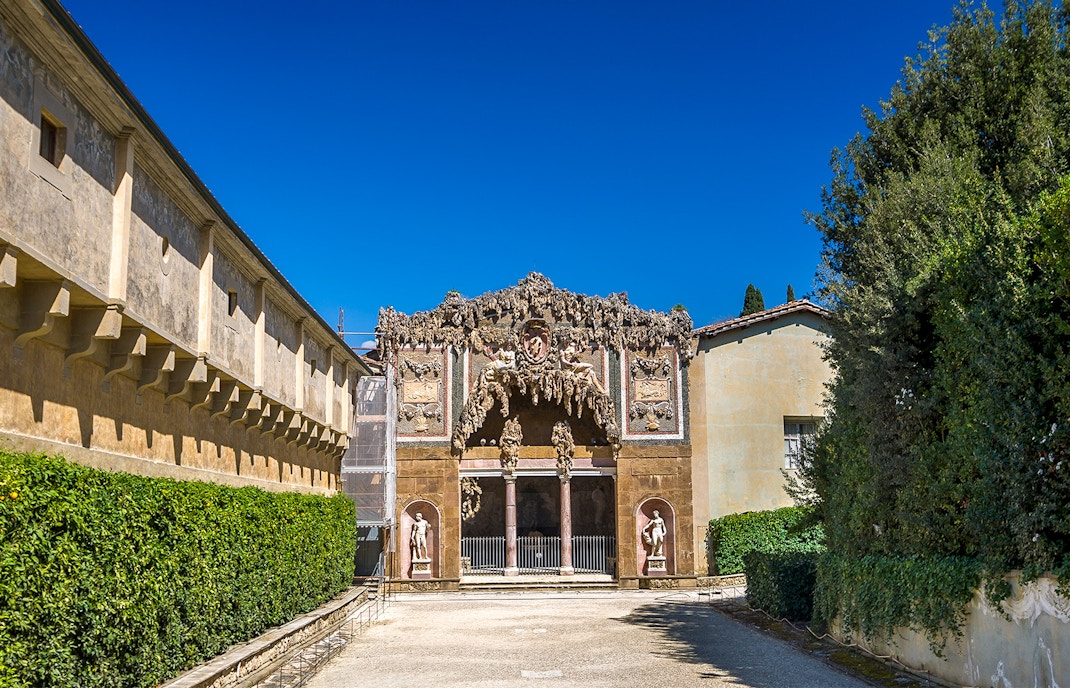
Grotta del Buontalenti
One of the most treasured fountains of Boboli Gardens, the Grotta is a playground of mythical creatures and marvelous sculptures, transporting you to a world of fantasy. Commissioned by the Medici family during the 16th century, adorned with frescoes and sculptures reminiscent of stalactites.
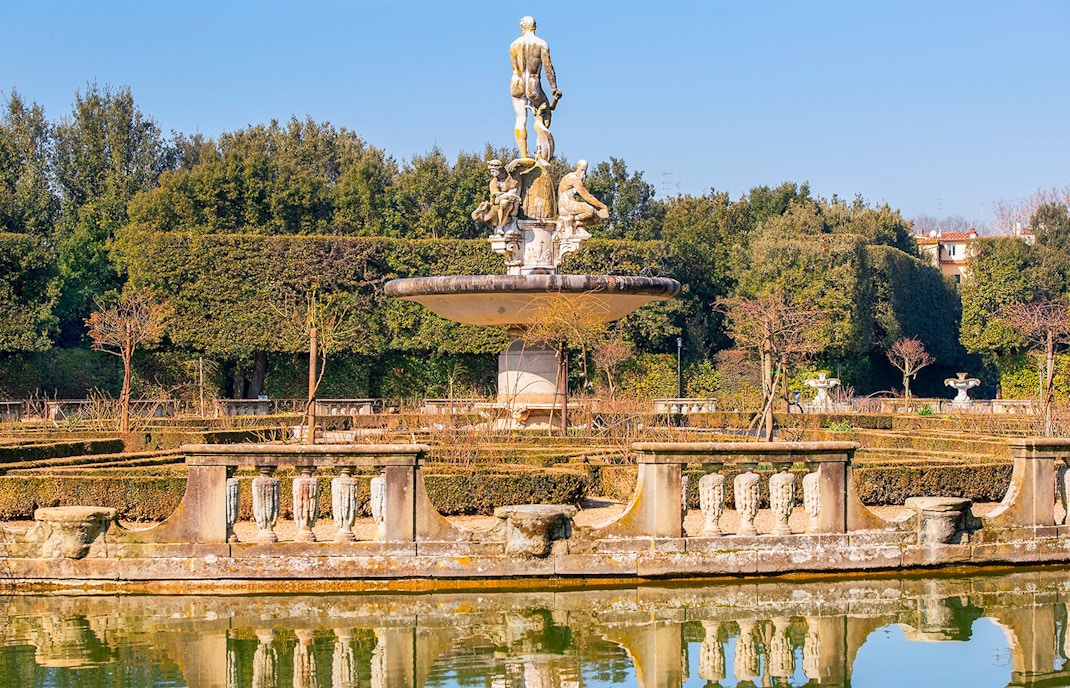
The Ocean Fountain
Set sail on a mythic voyage with the Ocean Fountain. Sculpted in the 16th century, it depicts Neptune's realm. Discover this aquatic marvel at the far end of the Viottolone, offering a tranquil retreat by the water's edge.

Bacchus Fountain
Toast to merriment at the Bacchus Fountain, where a jester-turned-deity raises his goblet. This playful water feature is a whimsical nod to the god of wine. Find it at the Piazza dei Pitti entrance, a jovial introduction to the garden's charm.
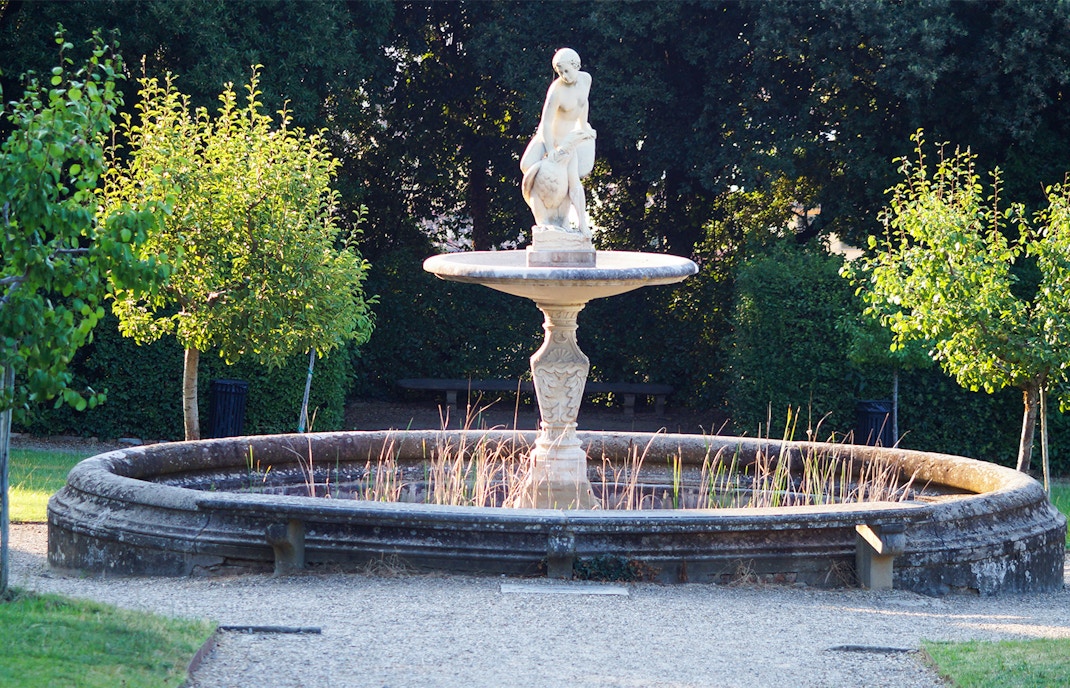
Kaffeehaus and Ganymede Fountain
Ascend to the terrace garden leading to the Kaffeehaus, a Rococo pavilion straight out of a fairy tale. At its heart, the Ganymede Fountain tells the story of a Greek hero and an eagle. Embrace the serenity as art and nature's beauty surround you.
